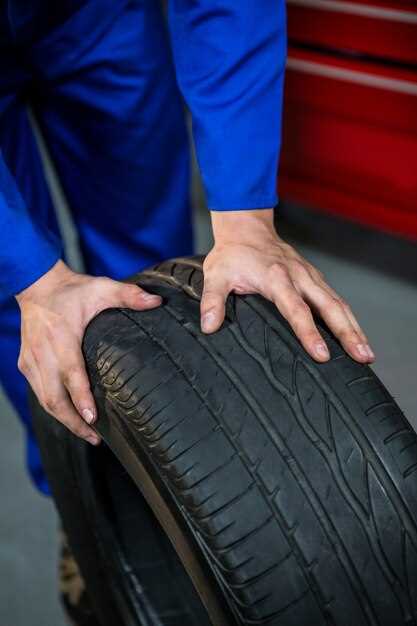

Proper tire pressure is crucial for ensuring optimal performance, safety, and fuel efficiency of your Mustang. Maintaining the correct inflation levels not only extends the lifespan of your tires but also enhances overall driving experience. In this article, we will guide you through the steps to check and maintain tire pressure effectively, ensuring your vehicle performs at its best.
A good starting point is to familiarize yourself with your Mustang’s recommended tire pressure levels. These specifications can typically be found in the owner’s manual or on a sticker located inside the driver’s door. Understanding these numbers is essential, as correct tire pressure can vary depending on driving conditions and whether you are carrying extra load.
Once you know the appropriate pressure, the next step is to regularly check your tire inflation using a reliable tire pressure gauge. This simple tool allows you to accurately measure the pressure in each tire. Regular checks are important, especially before long trips and with the changing seasons, as temperature fluctuations can affect inflation levels. Following these steps will help you keep your Mustang’s tires in peak condition.
Essential Tools for Accurate Tire Pressure Measurement
To ensure optimal performance and safety of your Mustang, it is crucial to monitor and maintain the correct tire pressure. Accurate measurement requires specific tools designed for precision. Here are the essential tools you should consider:
Tire Pressure Gauge: This is the primary tool for measuring tire pressure. There are several types available, including digital, dial, and pencil gauges. Digital gauges offer instant readings and are easy to read, while dial gauges provide a classic approach. Pencil gauges are compact and portable, making them a handy option for on-the-go checks.
Air Compressor: An air compressor is essential for inflating tires to the recommended pressure. Many service stations have air pumps, but owning a portable air compressor allows you to address pressure issues at your convenience, particularly during road trips or emergencies.
Valve Stem Tool: This small tool is used for removing and installing valve cores, which are crucial for maintaining proper tire pressure. It helps in making repairs or replacing faulty valve stems that can cause pressure loss.
Pressure Monitoring System (TPMS): Modern Mustangs often come equipped with a Tire Pressure Monitoring System that alerts you when tire pressure is low. While this system is useful, it is still advisable to use a manual gauge for accuracy, as TPMS sensors can sometimes malfunction or provide inaccurate readings.
Portable Tire Inflator: If you experience a flat tire or a significant drop in pressure, a portable tire inflator can be a lifesaver. These devices can quickly inflate tires, ensuring you can get back on the road safely.
By using these tools consistently, you can maintain the right tire pressure, enhancing your Mustang’s performance and ensuring a safer driving experience.
Step-by-Step Guide to Inflating Your Mustang’s Tires

Ensuring proper tire pressure is crucial for the performance and safety of your Mustang. Follow these steps to effectively inflate your tires.
Step 1: Gather Necessary Tools
Before starting, acquire a tire pressure gauge and a reliable air compressor or access to a gas station air pump. These tools are essential for accurate measurement and inflation.
Step 2: Check Current Tire Pressure
Remove the valve cap from the tire you wish to check. Press the tire pressure gauge onto the valve stem firmly. Read the displayed pressure and compare it with the recommended tire pressure specified in your Mustang’s owner manual or the sticker located on the driver’s door jamb.
Step 3: Inflate the Tire
If the tire pressure is below the recommended level, it’s time for inflation. Use the air compressor or gas station pump. Align the nozzle with the valve stem and press down to start the air flow. Monitor your tire’s pressure during the inflation process by using the pressure gauge periodically. This will help prevent over-inflation.
Step 4: Achieve Desired Pressure
Continue inflating until you reach the recommended pressure. If you accidentally overinflate, you can release some air by pressing the valve stem with a tool or by using the gauge to let out air until the desired pressure is achieved.
Step 5: Replace Valve Caps
After reaching the appropriate pressure, replace the valve cap securely to avoid dust and debris from entering. Repeat this process for all four tires to ensure consistent inflation across your Mustang.
Step 6: Regularly Monitor Tire Pressure
Regular checks and maintenance of tire pressure are essential. Aim to check your Mustang’s tire pressure at least once a month or before long trips to ensure optimal performance and safety.
Understanding Recommended Tire Pressure Specifications for Your Model

Knowing the correct tire pressure specifications for your Mustang is crucial for optimal performance and safety. Each Mustang model has its own recommended inflation levels, typically found on a sticker inside the driver’s side door jamb or in the owner’s manual. These specifications are determined by the manufacturer based on factors such as vehicle weight, load capacity, and handling characteristics.
Tire pressure is measured in pounds per square inch (PSI) and varies between front and rear tires. It’s essential to adhere to these recommendations because under-inflated tires can lead to poor handling, increased tire wear, and decreased fuel efficiency. Conversely, over-inflation can result in a harsh ride and reduced traction, particularly during adverse weather conditions.
For most Mustang models, the recommended tire pressures typically range from 30 to 35 PSI when cold. Check your specific model for precise values. Additionally, remember that tire pressure should be checked regularly, particularly before long trips, and always when tires are cold for the most accurate readings. Keeping your Mustang’s tires properly inflated enhances performance, safety, and longevity.






